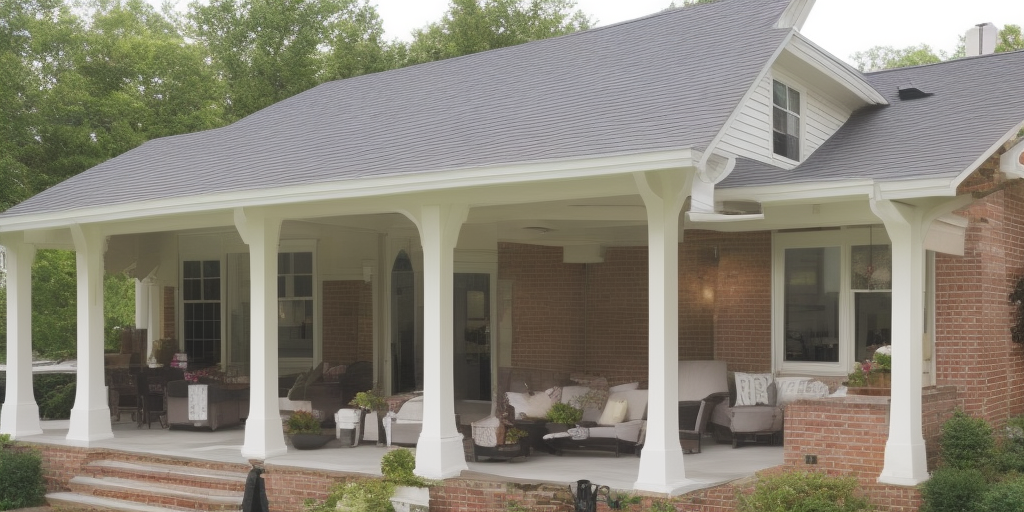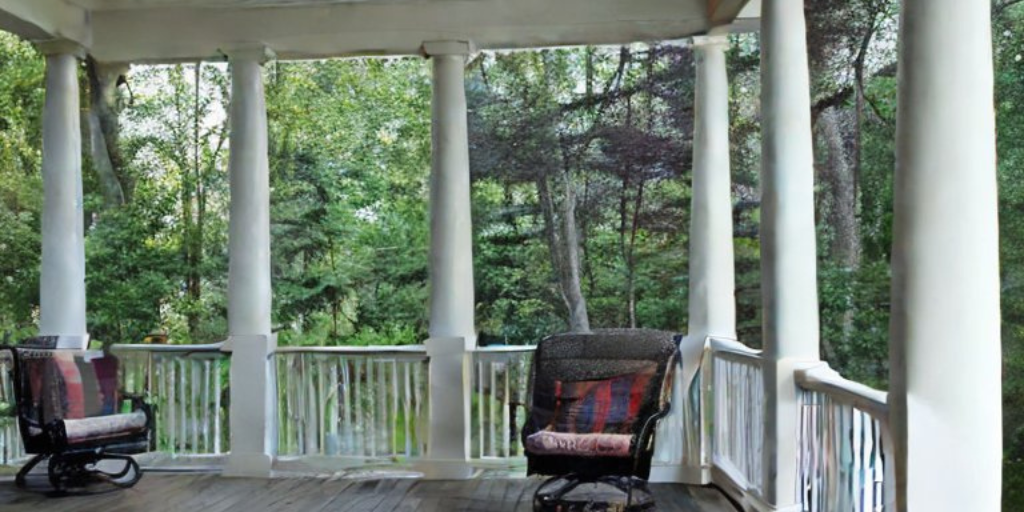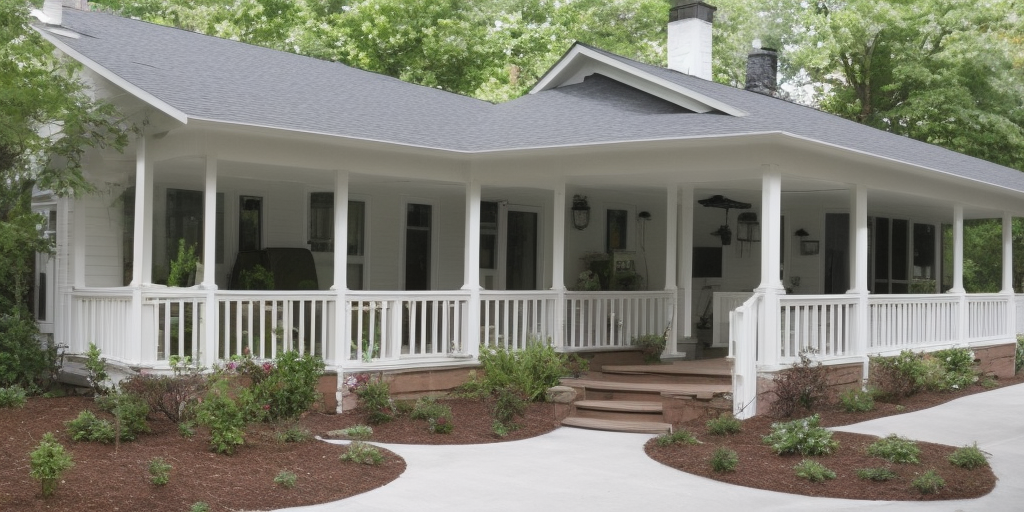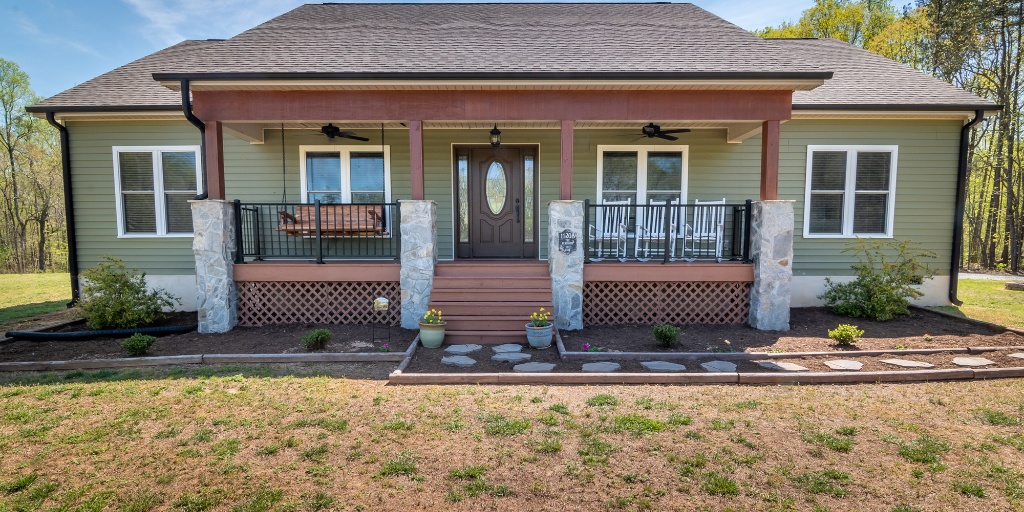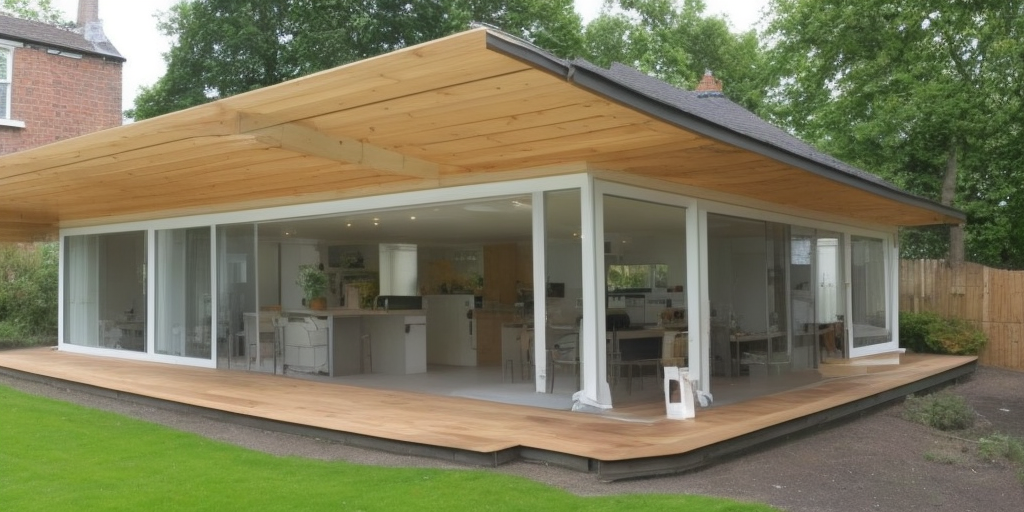Learn how to choose the right ceiling material for your porch and feel better about your decision. A porch is a wonderful addition to any home, providing a comfortable space to enjoy the outdoors while still being protected from the elements. One important aspect of porch design is choosing the right ceiling material.
The right ceiling material can enhance the overall look of your porch, while also providing the necessary protection from moisture and the elements. With so many options available, it can be difficult to choose the best ceiling material for your porch. We will discuss how to choose the right ceiling material for your porch, taking into consideration durability, maintenance, and aesthetics.
How do I choose the right ceiling material for my porch?
Contents
- 1 How do I choose the right ceiling material for my porch?
- 2 What are the pros and cons of different porch ceiling materials?
- 3 What is the most durable material for porch ceilings?
- 4 What is the easiest ceiling material to maintain for a porch?
- 5 Can I install a wood ceiling on my porch?
- 6 How do I prepare my porch for a new ceiling installation?
- 7 What type of insulation should I use for my porch ceiling?
- 8 Final remarks on how to choose the right ceiling material for your porch
When choosing the right ceiling material for your porch, there are several factors to consider. One important consideration is the overall design aesthetic of your porch. If you have a traditional-style home, you may want to choose a ceiling material that complements that style, such as a beadboard or tongue-and-groove ceiling. Alternatively, if you have a modern home, you may want to opt for a sleeker, more contemporary ceiling material, such as metal or concrete.
Another important factor to consider is the climate in your area. If you live in a humid or coastal region, you will want to choose a ceiling material that can withstand moisture and humidity without warping or rotting. In these areas, materials such as PVC, composite, or fiberglass may be a good choice. Conversely, if you live in a dry climate, you may have more options for ceiling materials, such as wood or metal.
What are the pros and cons of different porch ceiling materials?
There are several different materials to choose from when it comes to porch ceilings, each with its own set of pros and cons. Here are some of the most popular options:
Wood: Wood is a classic and timeless option for porch ceilings, providing a warm and natural look. However, it is important to choose a high-quality, rot-resistant species of wood, such as cedar or redwood, to ensure durability. Additionally, wood ceilings require regular maintenance, such as staining or painting, to protect against moisture and decay.
PVC: PVC is a popular choice for porch ceilings because it is lightweight, low-maintenance, and resistant to moisture and decay. It is also easy to install and comes in a variety of colors and styles. However, PVC may not be as visually appealing as other materials, and it may not provide as much insulation as other options.
Composite: Composite materials, such as cellular PVC, provide the look of wood without the maintenance requirements. They are moisture-resistant and can withstand extreme temperatures, making them a good choice for humid or coastal regions. However, composite materials may be more expensive than other options, and they may not provide the same natural look as wood.
Metal: Metal ceilings, such as those made from aluminum or steel, are durable and long-lasting. They are resistant to moisture and rot, and they can provide a sleek, modern look. However, metal ceilings may be more expensive than other options, and they may not be as well-suited for traditional or rustic-style homes.
What is the most durable material for porch ceilings?
When it comes to durability, there are a few materials that stand out for porch ceilings. One of the most popular options is vinyl, which is known for its resistance to moisture, insects, and rot. It’s also low-maintenance, requiring only occasional cleaning to keep it looking good. Vinyl comes in a variety of styles, including beadboard and plank, so you can choose a look that complements your porch’s design.
Another durable option for porch ceilings is aluminum. Like vinyl, it’s resistant to moisture and insects, but it’s also fire-resistant and can withstand extreme weather conditions. Aluminum is also lightweight, making it easy to install. However, it’s not the most popular option for porch ceilings because it can look cold and industrial. If you’re looking for a warmer look, you may want to consider other materials.
What is the easiest ceiling material to maintain for a porch?
If you want a porch ceiling that requires little maintenance, you may want to consider PVC or fiberglass. PVC is similar to vinyl in that it’s moisture-resistant and insect-resistant, but it’s also incredibly low-maintenance. It won’t rot or warp over time, and it doesn’t require painting or staining. PVC comes in a range of styles, including beadboard and plank, so you can choose a look that suits your porch.
Fiberglass is another low-maintenance option for porch ceilings. It’s resistant to moisture and insects, and it won’t rot or warp over time. It’s also lightweight, making it easy to install. Fiberglass is available in a range of colors and finishes, so you can choose a look that complements your porch’s design. However, fiberglass can be more expensive than other materials, so it may not be the best choice if you’re on a tight budget.


Can I install a wood ceiling on my porch?
Yes, you can install a wood ceiling on your porch, but it’s important to choose the right type of wood and take steps to protect it from moisture and insects. Cedar and redwood are popular choices for porch ceilings because they’re naturally resistant to rot and insect damage. Other options include cypress, pine, and fir. However, you’ll need to treat the wood with a water-resistant finish and take steps to ensure proper ventilation to prevent moisture buildup.
Before installing a wood ceiling on your porch, it’s important to check with your local building codes to ensure that you’re using materials that meet safety standards. You’ll also need to take into account the weight of the wood and ensure that your porch can support it. Finally, keep in mind that wood ceilings require regular maintenance, including staining or painting every few years to keep them looking good.
How do I prepare my porch for a new ceiling installation?
Before installing a new ceiling on your porch, you’ll need to prepare the area to ensure a smooth and successful installation. The first step is to remove any existing ceiling material, such as drywall or old wood planks. Once the old ceiling has been removed, you’ll need to inspect the porch framing to ensure that it’s in good condition and can support the weight of the new ceiling.
If your porch framing is in good condition, you can move on to installing insulation and a moisture barrier to protect your new ceiling from moisture damage. This step is particularly important if you’re installing a wood or natural fiber ceiling, as these materials are more susceptible to moisture damage. Once the insulation and moisture barrier are in place, you can install the new ceiling material of your choice, following the manufacturer’s instructions for installation.
What type of insulation should I use for my porch ceiling?
When insulating a porch ceiling, it’s important to choose the right type of insulation to ensure maximum energy efficiency and protection from moisture damage. One popular option for porch ceilings is fiberglass batt insulation, which is relatively easy to install and provides good thermal insulation. However, fiberglass insulation is not the best choice for moisture-prone areas, as it can absorb moisture and promote mold growth.
If you live in a climate that is prone to high humidity or moisture, you may want to consider using a closed-cell spray foam insulation instead. Closed-cell spray foam insulation creates an airtight seal, preventing moisture from getting into the ceiling space and helping to prevent mold growth. It also provides excellent thermal insulation, helping to keep your porch comfortable year-round. However, closed-cell spray foam insulation is more expensive than fiberglass insulation, so it may not be the best choice if you’re on a tight budget.
Final remarks on how to choose the right ceiling material for your porch
Figuring out how to choose the right ceiling material for your porch can make a big difference in its appearance and durability. When selecting a material, consider factors such as durability, maintenance requirements, and insulation properties.
By choosing a material that meets your needs and following proper installation procedures, you can create a beautiful and functional porch that you’ll enjoy for years to come.


